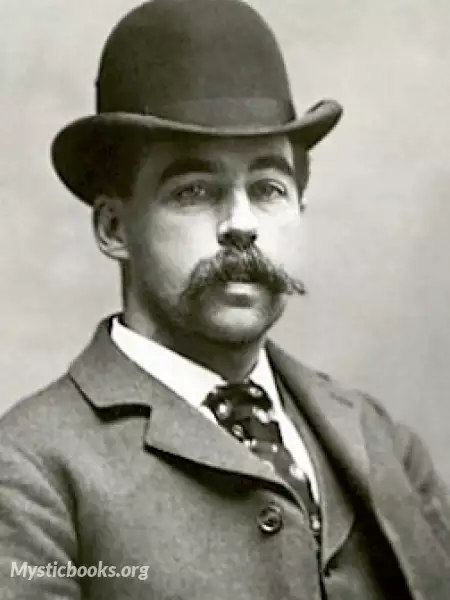
Timeline
Title
Country/Nationality
Herman W. Mudgett
Herman Webster Mudgett better known as Dr. Henry Howard Holmes or H. H. Holmes, was an American con artist and serial killer, the subject of more than 50 lawsuits in Chicago alone. Until his execution in 1896, he chose a career of crime including insurance fraud, swindling, check forging, three to four bigamous illegal marriages, horse theft and murder.
Holmes was born as Herman Webster Mudgett in Gilmanton, New Hampshire, on May 16, 1861, to Levi Horton Mudgett and Theodate Page Price, both of whom were descended from the first English immigrants in the area. Mudgett was his parents' third-born child; he had an older sister Ellen, an older brother Arthur, a younger brother Henry, and a younger sister Mary. Holmes's father was from a farming family, and at times he worked as a farmer, trader, and house painter; his parents were devout Methodists. Later attempts to fit Holmes into the patterns seen in modern serial killers have described him torturing animals and suffering from abuse at the hands of a violent father, but contemporary and eyewitness accounts of his childhood do not provide proof of either.
At the age of 16, Holmes graduated from Phillips Exeter Academy and took teaching jobs in Gilmanton and later in nearby Alton. On July 4, 1878, he married Clara Lovering in Alton; their son, Robert Lovering Mudgett, was born on February 3, 1880, in Loudon, New Hampshire. Robert became a certified public accountant and served as city manager of Orlando, Florida.
Holmes arrived in Chicago in August 1886, which is when he began using the name H. H. Holmes. He came across Elizabeth S. Holton's drugstore at the northwest corner of South Wallace Avenue and West 63rd Street in Englewood. Holton gave Holmes a job, and he proved to be a hardworking employee, eventually buying the store. Although several books portray Holton's husband as an old man who quickly vanished along with his wife, Dr. Holton was a fellow Michigan alumnus, only a few years older than Holmes, and both Holtons remained in Englewood throughout Holmes's life and survived well into the 20th century; it is a myth that they were killed by Holmes. Likewise, Holmes did not kill alleged "Castle" victim Miss Kate Durkee, who also turned out to be very much alive.
One of Holmes's early victims was his mistress, Julia Smythe. She was the wife of Ned (Icilius) Conner, who had moved into Holmes's building and began working at his pharmacy's jewelry counter. After Conner found out about Smythe's affair with Holmes, he quit his job and moved away, leaving Smythe and her daughter Pearl behind. Smythe gained custody of Pearl and remained at the hotel, continuing her relationship with Holmes.
Julia and Pearl disappeared on Christmas Eve of 1891, and Holmes later claimed she had died during an abortion. Despite his medical background, Holmes was unlikely to be experienced in carrying out abortions, and mortality from such a procedure was high at that time. Holmes claimed to have poisoned Pearl, likely to hide the circumstances of her mother's death. A partial skeleton, possibly of a child around Pearl's age was found when excavating Holmes's cellar. Pearl's father, Ned, was a key witness at Holmes's trial in Chicago.
Books by Herman W. Mudgett

Holmes' Own Story
An account written by the infamous serial murderer H. H. Holmes in an attempt to exonerate himself while being tried for numerous crimes in Moyamensing Prison, Philadelphia.